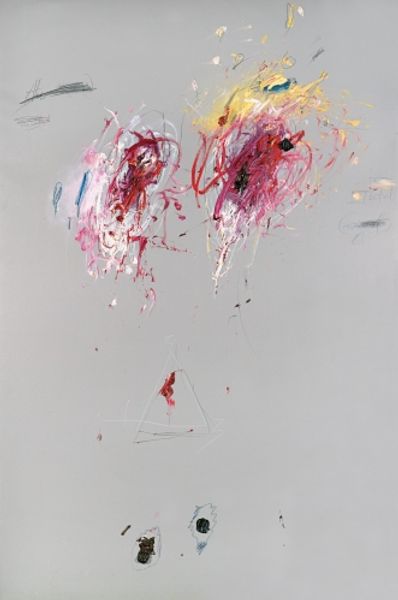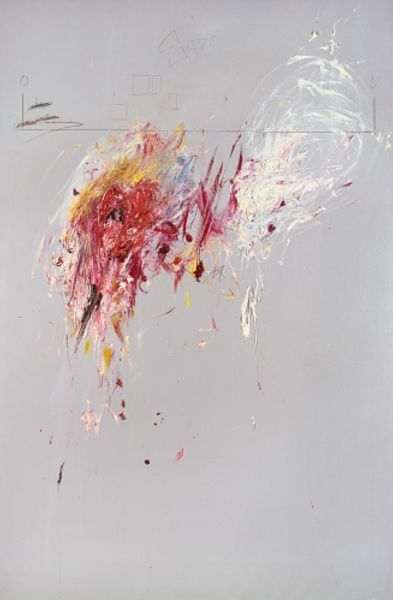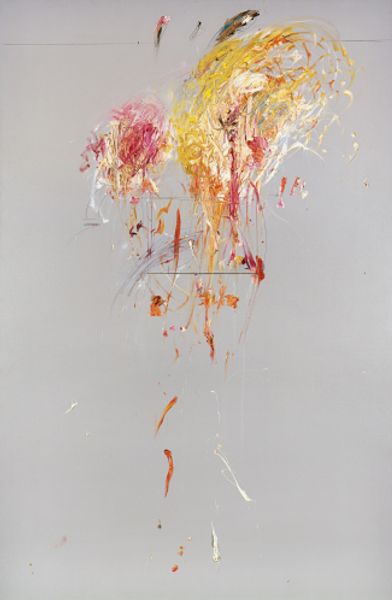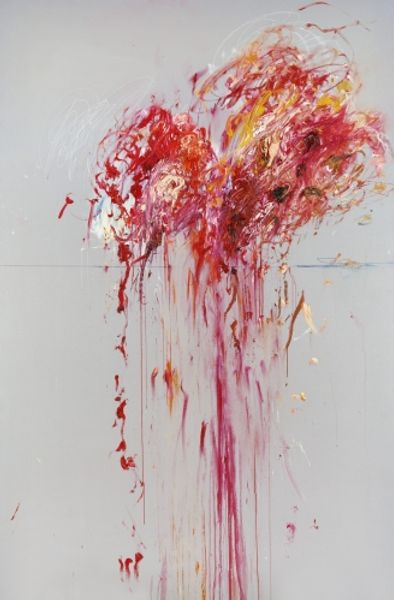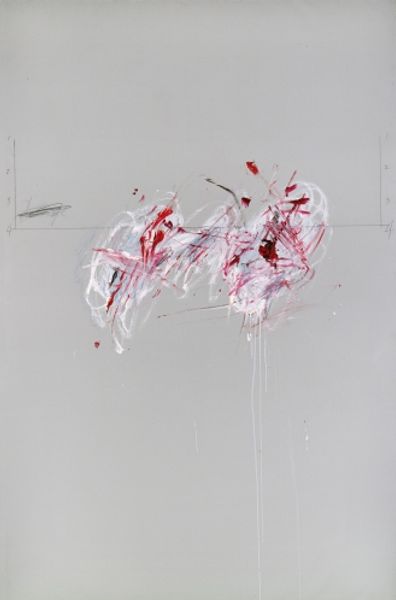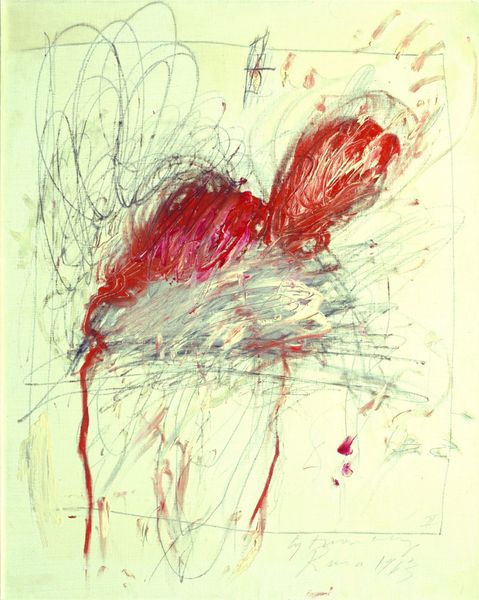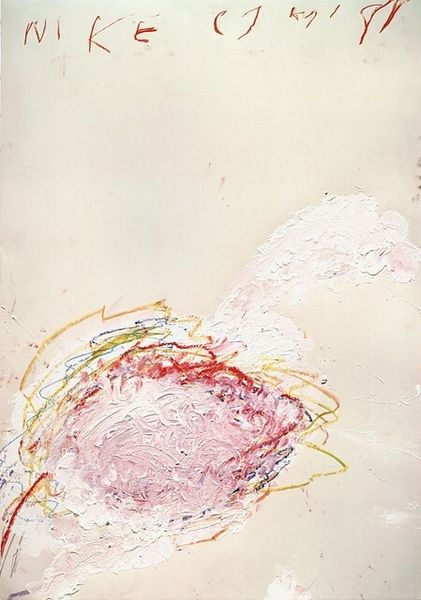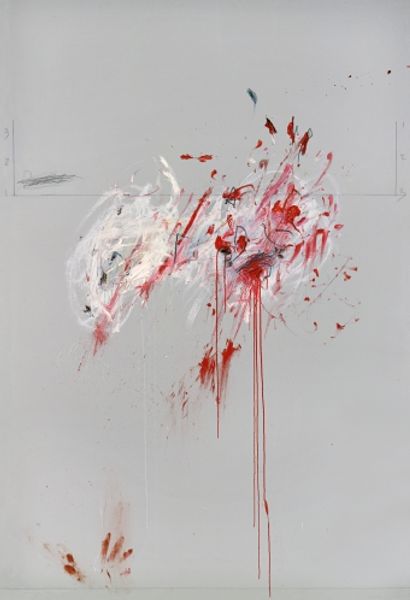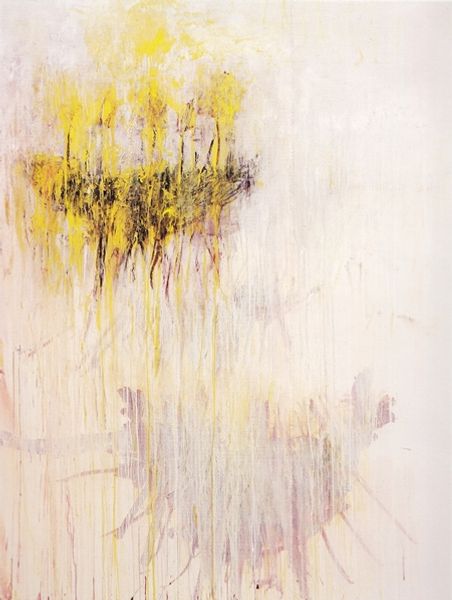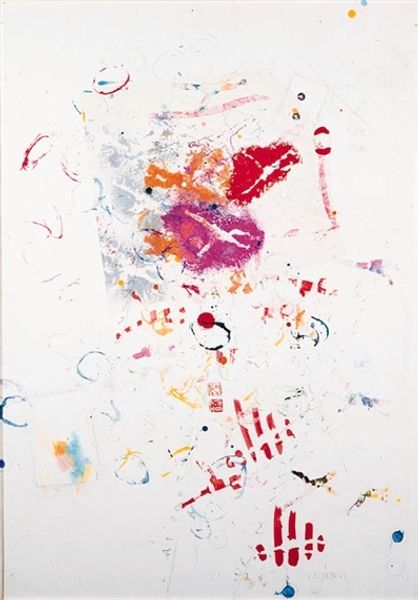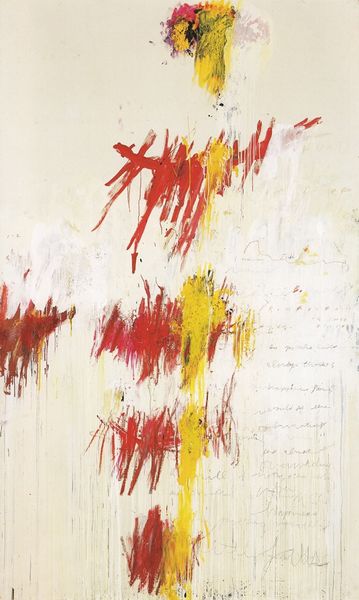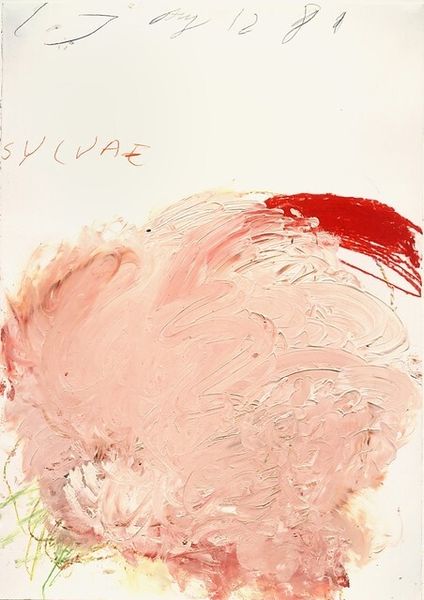
drawing, matter-painting, painting, oil-paint, gestural-painting, ink
#
abstract-expressionism
#
drawing
#
abstract expressionism
#
abstract painting
#
matter-painting
#
painting
#
oil-paint
#
form
#
gestural-painting
#
ink
#
black-mountain-college
#
abstraction
#
line
#
monochrome
Copyright: Cy Twombly,Fair Use
Curator: Looking at Cy Twombly's "Nine Discourses on Commodus, Part VII" from 1963, one immediately notices the vigorous application of oil paint and ink, the raw physicality of its making. What are your initial thoughts on the piece? Editor: The chaos! It strikes me as a visceral, almost violent expression. There’s something raw and unresolved in the swirling reds and chaotic marks, suggesting turmoil and perhaps even societal breakdown—very fitting for the reign of Commodus. Curator: Precisely. Twombly’s engagement with materials becomes a means of deconstructing historical narratives. This is matter painting at its core. He layers paint and line, building and obliterating form, not simply depicting history but performing a material critique. Note the lines that seem like part of a structure, barely discernible amidst the frenzied strokes. Editor: Those hesitant structural lines serve to contextualize the rest, suggesting a framework constantly under duress. There’s a dialogue here between order and disorder, reflecting not just on Commodus himself but also the systemic issues of power, then and now. How does this abstract approach confront traditional historical representation? Curator: By prioritizing gesture and material process, Twombly decenters the figure of Commodus, turning our attention to the materiality and social conditions that shaped the era, but without illustrating it. He isn't simply rendering Commodus' reign, but asking how the historical power structure, like a material structure, is made and undone. Editor: It disrupts the clean narrative of traditional historical painting by acknowledging the complexities and inherent instability of power. The marks and splatters can also read as gestures of protest against institutional narratives, particularly given Twombly's own post-war context. I'm thinking about issues of representation, about how to adequately convey such an event in a way that acknowledges the emotional and historical context of violence. Curator: Indeed. It’s through his artistic method—the direct handling of materials and gestural marks—that he embodies this understanding. These elements become powerful vehicles of meaning, moving beyond traditional representation towards embodied historical consciousness. Editor: Ultimately, it is about examining not just Commodus' reign, but how the concept of Roman imperial power continues to resonate and impact contemporary societal and political structures. Twombly creates space for critical dialogue. Curator: It makes us question the stability and control of those structures. The messiness of the material forces us to reconsider easy interpretations.
Comments
No comments
Be the first to comment and join the conversation on the ultimate creative platform.
